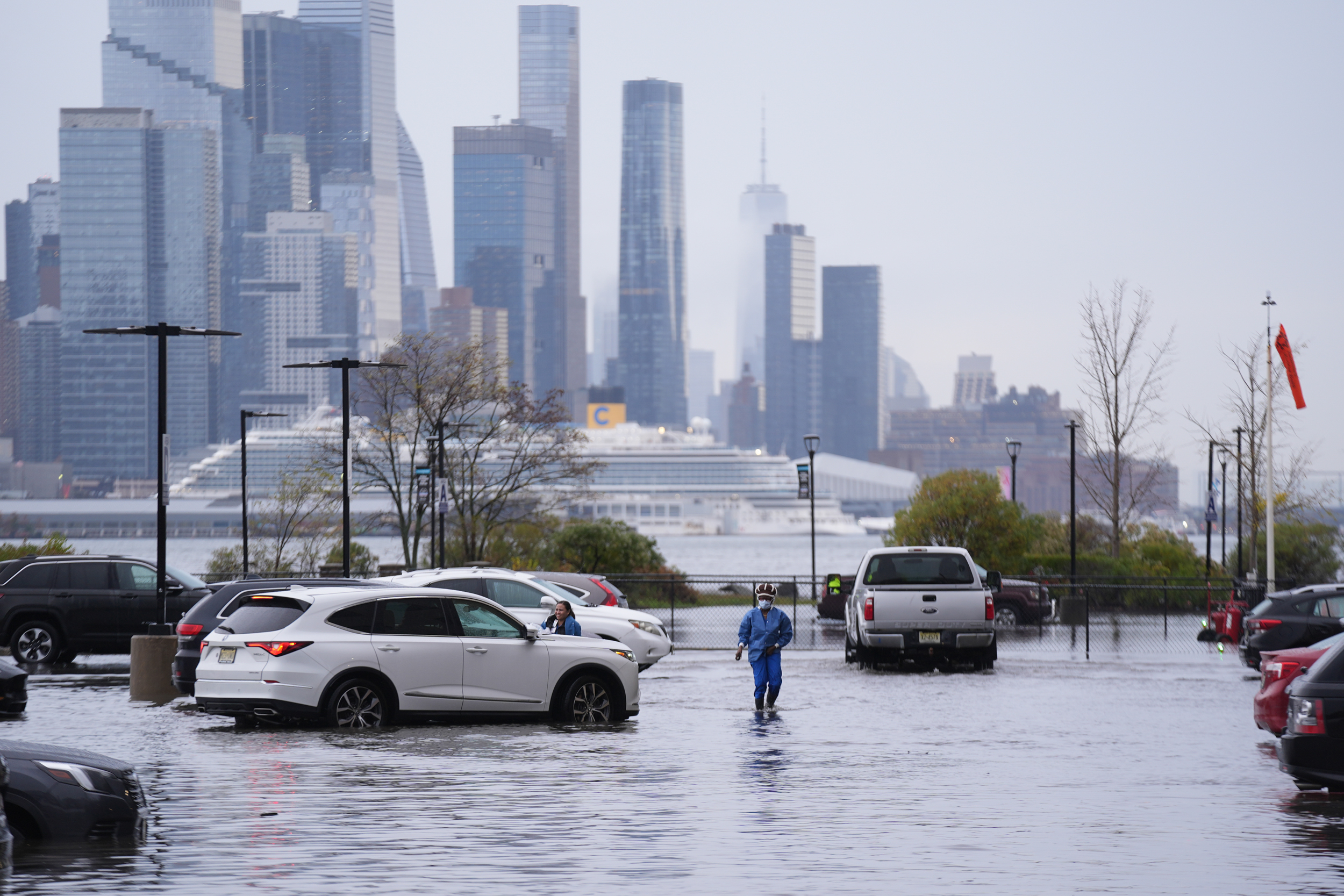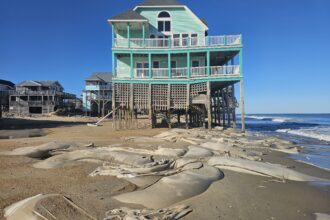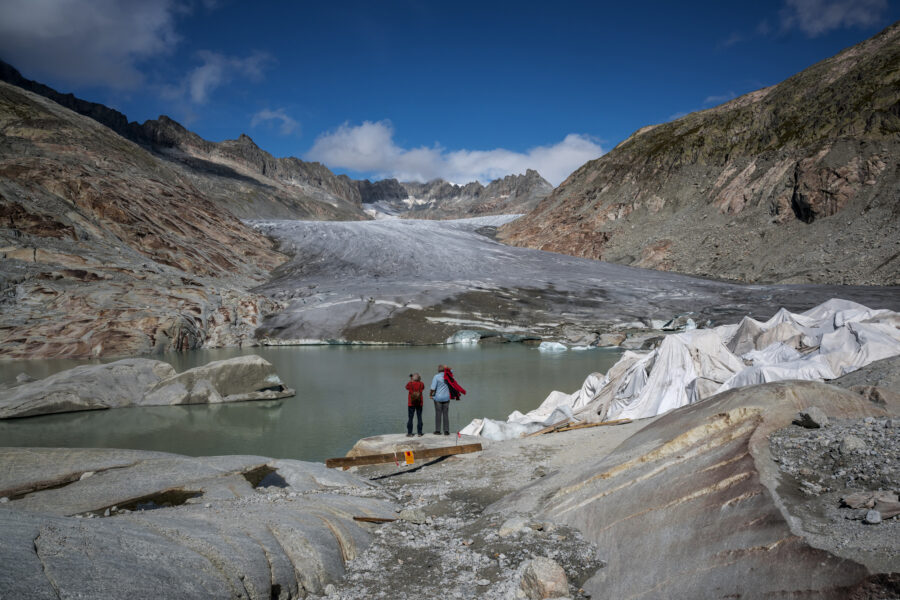New Jersey is likely to see between 2.2 and 3.8 feet of sea-level rise by 2100 if the current level of global carbon emissions continue, but seas could rise by as much as 4.5 feet if ice-sheet melt accelerates, the New Jersey Climate Change Resource Center at Rutgers University said on Tuesday.
In the third report since 2016 by the center’s Science and Technical Advisory Panel, scientists at Rutgers and beyond said human-caused climate change is accelerating sea-level rise in New Jersey, and flood hazards are “rapidly increasing” along the state’s coast, as well as in communities near tidal rivers, marshes and wetlands.
The 155-page document, commissioned by the state’s Department of Environmental Protection, and inviting input from 144 scientists, set out to identify, evaluate and summarize the most recent science on sea-level rise and changing coastal storms, but avoided any policy prescriptions that might protect the densely populated and low-lying northeastern U.S. state.
“The report does not make recommendations about how decision makers should use projections,” it said. “Such selections depend on value judgements, such as the level of risk decision makers and impacted communities are willing to accept when planning their long-term resilience goals.” But the report urged policymakers to review the estimates at least every five years.
New Jersey’s coast was devastated when Hurricane Sandy roared ashore in October 2012, destroying buildings, flooding towns and driving some people out of their homes for years. The monster storm became a benchmark for the state’s vulnerability to sea-level rise.
With its flat barrier islands, dense coastal development and many inlets and wetlands, New Jersey is especially vulnerable to sea-level rise. The administration of Democratic Gov. Phil Murphy clearly recognizes the threat, even though it bowed to pressure from developers in July to roll back new regulations designed to make it harder to build in vulnerable areas.
The report includes detailed forecasts on the extent of sea-level rise at Atlantic City—its benchmark site—but the predictions depend heavily on how much global emissions rise.
Robert Kopp, a Rutgers climate scientist who led the study, said the current level of emissions matches an “intermediate” scenario, under which the New Jersey sea level at Atlantic City would rise between 2.2 and 3.8 feet by the end of the century, excluding the possible effects of ice-sheet loss in Greenland and Antarctica, a phenomenon that isn’t yet well understood. If ice loss is included, seas are likely to rise by 4.5 feet, the study found.
“Current emissions that would be consistent with our intermediate emissions scenario get you to around 2.7 degrees [Celsius] by the end of the century,” said Kopp, a member of the Intergovernmental Panel on Climate Change, during a webinar to launch the report.
The last report by the Science and Technical Advisory Panel in 2019 predicted that an intermediate emissions scenario would likely lead to sea-level rise of 2 feet by 2100—0.2 feet lower than in the new report. Other updates include fresh emissions scenarios, detailed forecasts for sea-level rise rates, flooding frequencies for multiple locations and a summary of the impacts of sea-level rise and coastal storms.
Ben Strauss, chief executive of Climate Central, a Princeton, New Jersey-based nonprofit that communicates climate-change effects to the public and decision makers, called the Rutgers forecasts rigorous and the panel’s authors renowned.
“The report’s sea level projections are as rigorous as any you’ll find. The authors are a veritable all-star list of top sea level scientists worldwide,” said Strauss, who is not connected to the report.
But he said the forecasts are subject to the unpredictable nature of climate science. “Surprise is the first law of climate science. In the history of science, humans have never before experienced the climate we are in nor its speed of change. So we should expect the unexpected. We do the best we can to make climate projections, but new dangers—and hopes—are going to rear their heads all the time,” he wrote in an email.
The report said seas at Atlantic City rose about 1.5 feet from 1912 to 2021, an average rate of 1.7 inches a decade, about three times faster than the average global rate, mostly because New Jersey’s land is sinking. But over just 15 years to 2020, the tide gauges rose about 4 inches.
The report also forecast that an intermediate emissions scenario would lead to 2.9 to 4.7 inches of sea-level rise a decade between 2040 and 2060, rising by as much as 5.6 inches a decade between 2080 and 2100.
Higher seas make coastal homes and infrastructure more vulnerable to flooding, the report said. That’s shown by a sharp increase in “flood days” in Atlantic City, which saw an average of less than one such day a year in the 1950s; 12 a year between 2007 and 2024, and an all-time high of 23 in 2024 alone.
By 2050, the city will likely see between 29 and 148 flood days a year, rising to 178 if polar ice sheet melt accelerates. And by the end of the century it is “extremely likely” that the number of coastal flood days will exceed 131 per year, the report said.
It also sounded the alarm over “compound flooding” in which higher seas combine with storm surge, heavy rains and swollen rivers to make flooding worse. “Compound flood events are becoming more common and are projected to continue increasing,” it said.
As seas rise and coastal flooding becomes more common, erosion will worsen, and efforts to fight it, which have succeeded so far in some places, may be overwhelmed, the report said. It also warned that wetlands, which protect coastlines and wildlife, may now be at the point where they can no longer build up sediment to protect themselves from rising seas.
“Even under a low-emissions scenario, future projected rates of sea-level rise in New Jersey may exceed the pace at which many coastal wetlands are able to adapt,” the report said.
Sea-level rise will also cause the increasing salination of groundwater for drinking and surface water for irrigation. New Jersey’s barrier islands, especially those that pump water from aquifers, are expected to be especially vulnerable to saltwater intrusion.
About This Story
Perhaps you noticed: This story, like all the news we publish, is free to read. That’s because Inside Climate News is a 501c3 nonprofit organization. We do not charge a subscription fee, lock our news behind a paywall, or clutter our website with ads. We make our news on climate and the environment freely available to you and anyone who wants it.
That’s not all. We also share our news for free with scores of other media organizations around the country. Many of them can’t afford to do environmental journalism of their own. We’ve built bureaus from coast to coast to report local stories, collaborate with local newsrooms and co-publish articles so that this vital work is shared as widely as possible.
Two of us launched ICN in 2007. Six years later we earned a Pulitzer Prize for National Reporting, and now we run the oldest and largest dedicated climate newsroom in the nation. We tell the story in all its complexity. We hold polluters accountable. We expose environmental injustice. We debunk misinformation. We scrutinize solutions and inspire action.
Donations from readers like you fund every aspect of what we do. If you don’t already, will you support our ongoing work, our reporting on the biggest crisis facing our planet, and help us reach even more readers in more places?
Please take a moment to make a tax-deductible donation. Every one of them makes a difference.
Thank you,











